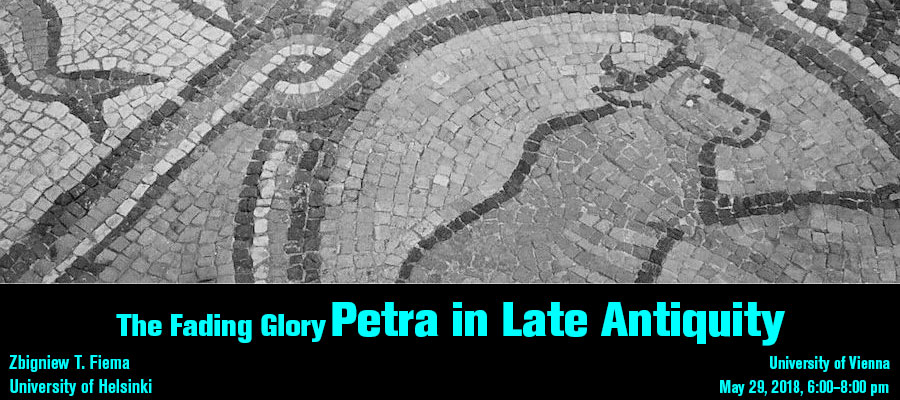The Fading Glory. Petra in Late Antiquity, lecture by Zbigniew T. Fiema (University of Helsinki), University of Vienna, May 29, 2018, 6:00–8:00 pm
Petra was built by the Nabataeans, an ancient Arabian population which inhabited the regions of Transjordan, southern Syria, southern Palestine and the northeastern Hijaz. The Nabataeans achieved a considerable importance due to their involvement in long-distance incense trade between East and West. Urban origins of Petra date to ca. 3rd c. B.C. In A.D. 106, the Nabataean Kingdom was annexed by the Roman empire and became a prominent center of Roman Arabia. Petra was the capital of the province Palaestina Salutaris/Tertia and the seat of the Metropolitan See throughout the Byzantine period. During the 4th–early 5th century, the city was beset by major religious disputes and heresies associated with conflicts between Christians and polytheists. The 6th century is particularly enlightened through the Petra Papyri, the unique corpus of Byzantine Greek documents which cover the period between 537 and 592/3. However, no historical information on Petra exists after the end of the 6th century; the sources are silent about the city during the Persian and Muslim invasions of the early 7th century, and throughout the Early Islamic period (7th–9th c.). Possibly, by the early 8th century, Petra ceased to exist as an urban center although a Christian population still inhabited the valley at the time of the Crusades.
Zbigniew Tomasz Fiema is principal investigator at the Department of World Cultures at the University of Helsinki. His professional interests – the archaeology and history of the Near East in the Hellenistic, Roman and Byzantine periods – concentrate on Petra, Jordan, the capital of the ancient kingdom of the Nabataeans.
